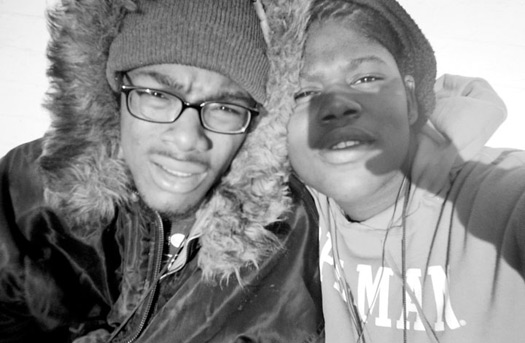
Image from Jessica Little's Youth Photo Project, winner of a 2010 Sappi Ideas That Matter grant
For too long now the ethos of graphic design — the fundamental sentiment that guides the practice of design and the activities of designers — has been understood as a link between suppliers and consumers. Many designers have defined their primary role as communication problem-solvers for their clients (suppliers), providing communications materials that create desire and motivate target audiences (consumers). This is not altogether wrong. However, it is woefully misleading, limited in scope and lacks clear values.
If we do nothing more than change a few words in the key phase — from link between supplier and consumer to bridge between information and purpose — we suggest a much broader arena of activity and imply substantially increased value. Today’s graphic designers do much more than solve communications problems. They research social, cultural and commercial trends, analyze changing values, brainstorm ideas and convert their findings into new messages, artifacts and experiences. Yes, this is sometimes about solving a communications problem. More often, it is about defining what the problem is and where opportunities exist for new ideas.
This is the mission of design thinking, which Tim Brown, in Change by Design, succinctly defines as, “…to translate observations into insights and insights into products and services that will improve lives.” How simple yet profound.
It is time to change the way nearly everyone views graphic design.
Here’s a good example. And it’s an idea that just won a 2010 Sappi Ideas That Matter grant. SCAD graphic design MFA student Jessica Little, working with photography MFA candidate Frazer Spotwart and Jason Riffe, a SCAD alum and fashion photographer, started the Youth Photo Project (YPP) in 2008. The idea of YPP was to educate, inspire and then promote the photographic work of at-risk youth as a means of raising awareness and funds for their future. The YPP group provided 40 black-and-white disposable cameras to the youth of Covenant House, one of the largest privately funded childcare agencies in the country, and after providing basic instruction on photography, left the students to carry the cameras around for two weeks and document their lives. The cameras were then collected and processed by members of the YPP group. The images were culled with the assistance of Julian Cox, curator of photography at Atlanta’s High Museum of Art, and Click, the first gallery show, was held in December 2008 at the Hagedorn Foundation Gallery in Atlanta.
This was about more than creating and displaying images, and it was certainly more than solving a client's communication problems. It allowed underprivileged youngsters to look at their world from a different point of view, it brought awareness to Covenant House, it allowed visitors to the show to interact with the photographers and members of Covenant House, and it served as a fund-raiser, as all proceeds of the show were donated to Covenant House. With the grant from Sappi, this program will continue and expand, and YPP will soon have a new website.
Here’s another example. A simple idea that started back in 2002 and has grown to become a global collaboration of multinational corporations and NGOs in countries around the world. The idea is that handwashing with soap is the single most cost-effective health intervention. According to the Global Handwashing Day Toolkit, “A $3.35 investment in handwashing brings the same health benefits as an $11.00 investment in latrine construction, a $200.00 investment in household water supply, and an investment of thousands of dollars in immunization.”
But here is the best part. WASH United, a coalition of international and African civil society organizations, United Nations agencies, governments and leading actors from the world of football, developed the Blue Hand Game. The game involves covering a leather ball with blue chalk, explaining to the children playing the game that the blue chalk represents germs, then throwing the ball back and forth among the participants. After about two minutes there is a hand check and all participants can clearly see they have some “germs” on their hands. This is a terrific example of visual communications as a primary education tool, design as a means of social change, and multi-group collaboration as a process to make it all real. This is the new design ethos.
"Words are the bugles of change," Charles Handy wrote in The Age of Unreason. "When our langauge changes, behavior will not be far behind."
Editor’s note: From October 7 to 9, the Savannah College of Art and Design will host the Design Ethos conference to discuss the future of design and designers’ responsibility to the world. Speakers include Jonathan Baldwin, John Bielenberg, Cheryl Heller, Terry Irwin, Cameron Tonkinwise and Change Observer’s William Drenttel. For more information, designethos.org.
